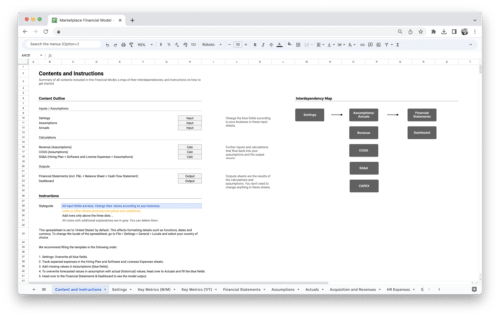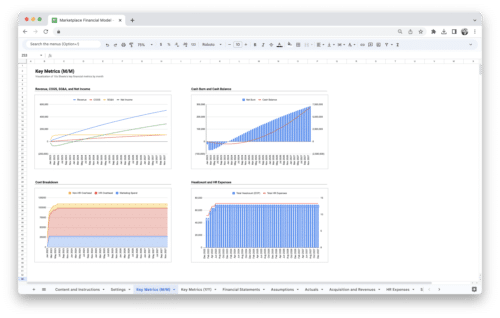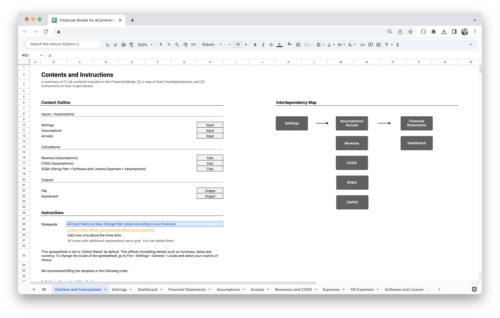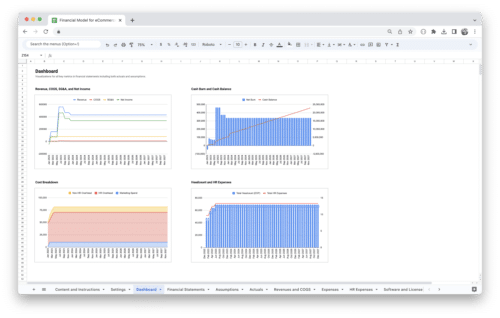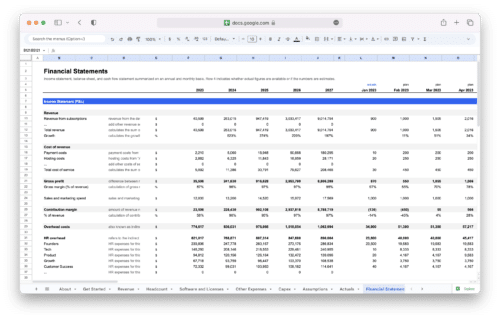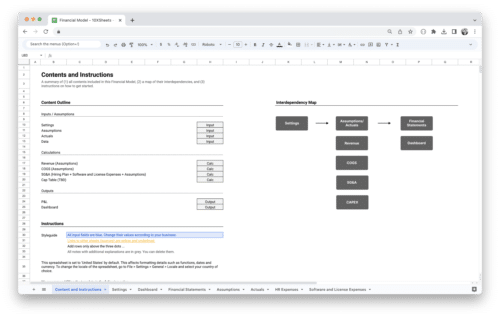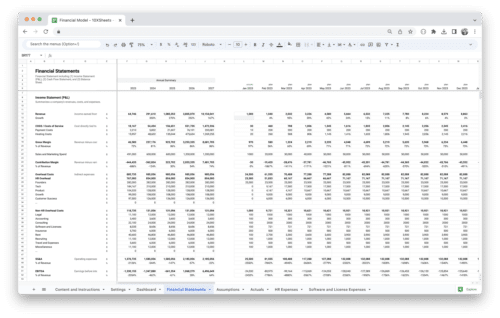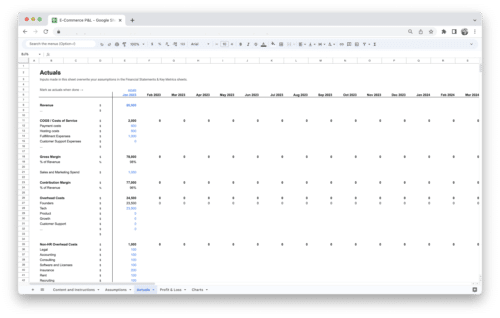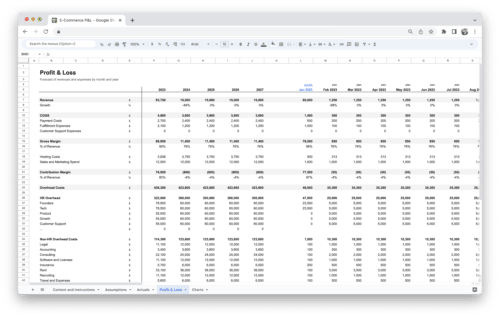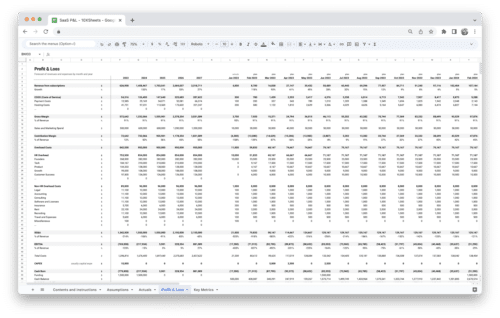
Have you ever wondered how companies determine the value of their stock options or equity compensation? Understanding 409A valuation is essential for anyone involved in startups or private companies, as it plays a crucial role in setting fair prices for stock options and ensuring compliance with IRS regulations.
This guide will break down the complexities of 409A valuation into manageable pieces, explaining what it is, why it’s important, and how to handle it effectively. From grasping the fundamental concepts to navigating the valuation process and dealing with common pitfalls, this guide is designed to make the topic clear and accessible, helping you make informed decisions and avoid costly mistakes.
Understanding 409A Valuation
A 409A valuation is a fundamental aspect of financial planning for startups and private companies, particularly when it comes to issuing stock options or other forms of equity compensation. Understanding this valuation process is essential for maintaining compliance with IRS regulations and ensuring fair treatment of equity compensation.
What is a 409A Valuation?
A 409A valuation determines the fair market value (FMV) of a company’s common stock, specifically for the purpose of issuing stock options. Named after Section 409A of the Internal Revenue Code, this valuation helps set the exercise price of stock options to ensure they are not below FMV, thereby avoiding adverse tax consequences for employees.
The essence of a 409A valuation is to provide a reasonable estimate of your company’s stock value on a specific date. This valuation helps companies and their employees avoid potential tax penalties associated with options priced below the FMV, which could be considered deferred compensation under IRS regulations.
Overview of 409A Valuation
The 409A valuation process involves assessing various factors to determine the FMV of a company’s stock. This assessment typically includes:
- Financial Analysis: Review of the company’s financial statements, including income statements, balance sheets, and cash flow statements.
- Market Conditions: Evaluation of current market trends, industry conditions, and comparable companies.
- Valuation Methods: Application of different valuation approaches, such as the income approach, market approach, and asset approach.
Understanding these components helps in creating a valuation that aligns with IRS guidelines, ensuring that stock options are issued at a fair price.
Importance for Startups and Private Companies
For startups and private companies, a 409A valuation is more than just a regulatory requirement—it’s a crucial tool for equity compensation planning. Here’s why it’s important:
- Compliance: Ensures that stock options are priced correctly to avoid penalties and ensure compliance with IRS regulations.
- Attracting Talent: Helps in structuring competitive compensation packages that attract and retain talented employees.
- Financial Planning: Provides a basis for financial projections and planning, which is crucial for raising capital and managing growth.
A proper 409A valuation can significantly impact your company’s financial health and attractiveness to potential investors and employees.
Legal Framework and IRS Regulations
The 409A valuation is governed by strict IRS regulations designed to ensure fairness and prevent tax avoidance. Key aspects of this legal framework include:
- IRS Guidelines: Section 409A of the Internal Revenue Code outlines the rules for deferred compensation, including stock options. These guidelines mandate that stock options must be priced at or above FMV to avoid unfavorable tax treatment.
- Safe Harbor Provisions: The IRS provides safe harbor provisions for valuations conducted by independent appraisers, which can protect companies from penalties if the valuation is challenged.
- Penalties for Non-Compliance: If a company fails to comply with 409A regulations, employees may face significant tax penalties, including immediate taxation on the options and an additional penalty tax.
Navigating these regulations requires careful adherence to the prescribed methods and documentation to ensure that your company remains in compliance and avoids any potential legal issues.
The 409A Valuation Process
The 409A valuation process is a structured approach to determining the fair market value (FMV) of your company’s stock. This process involves several critical steps, from gathering data to finalizing the valuation report. Each step plays a crucial role in ensuring the accuracy and compliance of the valuation.
How to Conduct a 409A Valuation?
The process of conducting a 409A valuation typically includes the following key steps:
- Preparation: Start by collecting all necessary financial and operational information about your company. This includes recent financial statements, business plans, and details about your company’s equity structure.
- Data Analysis: Analyze the collected data to understand your company’s financial health, market position, and future prospects. This involves assessing historical performance, revenue projections, and industry trends.
- Valuation Methods: Apply one or more valuation methods to estimate the FMV of your company’s stock. The choice of methods depends on various factors, including the company’s stage and industry.
- Report Generation: Draft a detailed valuation report that outlines the methodology used, the data analyzed, and the conclusions reached. This report should be thorough and provide a clear rationale for the estimated FMV.
- Review and Finalization: Conduct a final review of the valuation report to ensure accuracy and completeness. This step often involves consulting with legal and financial advisors to confirm compliance with IRS regulations before finalizing the report.
Following these steps helps ensure that the valuation is conducted systematically and meets all regulatory requirements.
Choosing a Qualified Valuation Provider
Selecting the right valuation provider is crucial for obtaining an accurate and credible 409A valuation. Here are some key considerations:
- Experience and Expertise: Choose a provider with a proven track record in performing 409A valuations, particularly in your industry. Their expertise will ensure they understand the nuances of your business and sector.
- Independence: Ensure the provider is independent and unbiased. This helps in maintaining the integrity of the valuation and avoids conflicts of interest.
- Reputation: Look for providers with strong references and positive reviews. A well-regarded provider is likely to offer high-quality and reliable services.
- Cost and Timing: Consider the cost of the valuation service and the estimated time required to complete it. While cost is important, ensure that it does not compromise the quality of the valuation.
A qualified valuation provider will help you navigate the complexities of the valuation process and ensure compliance with all relevant regulations.
Gathering and Analyzing Relevant Data
Accurate data is the foundation of a reliable 409A valuation. Here’s how to effectively gather and analyze relevant data:
- Financial Statements: Collect comprehensive financial statements, including balance sheets, income statements, and cash flow statements. These documents provide a snapshot of your company’s financial health.
- Business Plans and Projections: Include detailed business plans and financial projections. These documents should outline your company’s growth strategies, expected revenues, and expenses.
- Market and Industry Data: Gather information on current market conditions and industry trends. Understanding the competitive landscape and market dynamics can impact your valuation.
- Equity Structure Details: Document your company’s equity structure, including the number of shares outstanding, any existing stock options, and different classes of stock. This helps in accurately assessing the value of equity compensation.
By thoroughly gathering and analyzing this data, you ensure that the valuation reflects a true and fair picture of your company’s worth.
Methods of Valuation
Valuation methods are essential tools used to determine the fair market value (FMV) of your company’s stock. Each method provides a different perspective on value and is suited to various types of businesses and stages of development.
Income Approach
The Income Approach values your company based on its ability to generate future cash flows. This method is particularly useful for companies with predictable revenue streams and established financial performance. Here’s how it works:
- Projection of Future Cash Flows: Estimate the future cash flows your company is expected to generate. This involves forecasting revenues, expenses, and net income over a specified period.
- Discounting to Present Value: Use a discount rate to bring future cash flows back to their present value. The discount rate reflects the risk associated with the investment and the time value of money. The formula is:
Present Value = Future Cash Flows / (1 + Discount Rate)^Number of Periods - Terminal Value Calculation: If your forecast period is limited, estimate a terminal value to account for cash flows beyond the forecast horizon.
This approach is often favored for companies with strong financial performance and clear growth trajectories.
Market Approach
The Market Approach values your company based on the prices of similar publicly traded companies or recent transactions involving comparable businesses. This method provides insights based on actual market data. Key steps include:
- Comparable Company Analysis: Identify publicly traded companies with similar characteristics and compare their valuation multiples, such as Price-to-Earnings (P/E) ratios or Enterprise Value-to-EBITDA (EV/EBITDA) ratios.
- Recent Transactions Analysis: Analyze recent transactions involving companies similar to yours, such as mergers or acquisitions, to gauge market value.
This approach is valuable for understanding how the market values similar companies and can provide a benchmark for your company’s value.
Asset Approach
The Asset Approach values your company based on the value of its assets minus its liabilities. This method is often used for asset-heavy businesses or those in financial distress. Here’s how it works:
- Valuation of Assets: Assess the value of all tangible and intangible assets owned by the company. This includes physical assets like real estate and equipment, as well as intangible assets like patents and trademarks.
- Deduct Liabilities: Subtract the company’s liabilities from the total asset value to determine the net asset value.
The Asset Approach is useful for companies where asset value is a significant driver of overall value, such as real estate firms or manufacturing businesses.
Comparative Analysis of Methods
Each valuation method offers unique insights and is suited to different types of companies and situations. Here’s a comparative analysis:
- Income Approach: Best for companies with stable and predictable cash flows. It provides a detailed analysis based on future performance but requires accurate financial projections.
- Market Approach: Useful for companies in competitive markets with available comparables. It relies on market data and can quickly provide a valuation benchmark but may not account for company-specific factors.
- Asset Approach: Ideal for asset-heavy businesses or those with limited operating history. It provides a straightforward valuation based on assets but may overlook future earning potential.
Combining these methods can offer a more comprehensive view of your company’s value, balancing out the strengths and weaknesses of each approach.
Factors Affecting Valuation
When determining the fair market value (FMV) of your company’s stock, several factors come into play. Each of these factors can significantly impact the final valuation and should be carefully considered during the valuation process.
Company Stage and Financial Performance
The stage your company is in and its financial performance play crucial roles in valuation.
- Early-Stage Companies: For startups and early-stage companies, valuation often hinges on projected future growth rather than current financial performance. Factors such as the team’s experience, market potential, and the business model are heavily weighted. Since these companies may not yet be profitable, the valuation might rely more on potential revenue streams and industry opportunities.
- Growth-Stage Companies: Companies in the growth phase typically have more financial data to analyze, such as increasing revenues and improving profit margins. The valuation will factor in current financial performance along with future growth expectations. Metrics such as revenue multiples or earnings before interest, taxes, depreciation, and amortization (EBITDA) are commonly used.
- Mature Companies: Established companies with a stable financial history and predictable cash flows often use more concrete financial metrics for valuation. Historical performance, profitability, and cash flow stability are significant factors. Valuation approaches may focus more on earnings multiples or discounted cash flows.
Understanding where your company stands in its lifecycle helps in choosing the appropriate valuation methods and makes the valuation more accurate.
Industry Trends and Market Conditions
Industry trends and market conditions can have a significant impact on your company’s valuation.
- Economic Environment: Broader economic conditions, such as economic growth, inflation rates, and interest rates, influence company valuations. A booming economy may increase valuations due to higher expected revenues, while economic downturns can lead to lower valuations.
- Industry Trends: Industry-specific trends, including technological advancements, regulatory changes, and market demand shifts, also affect valuation. For example, a company in a rapidly growing tech sector may see higher valuations due to strong future growth potential compared to companies in declining industries.
- Competitive Landscape: The competitive environment within your industry impacts how your company is valued. Companies operating in highly competitive markets may face pressure on margins, affecting their valuation compared to those with a unique market position or competitive advantages.
Incorporating these external factors provides a more accurate and realistic valuation based on the current market context.
Equity Structure and Capitalization
The structure of your company’s equity and capitalization affects how stock options and other forms of equity compensation are valued.
- Equity Distribution: The distribution of equity among founders, employees, and investors can impact valuation. A company with a complex equity structure, including multiple classes of stock or substantial preferred equity, may require more detailed analysis to determine the value of common stock.
- Capitalization Table: The capitalization table (cap table) details the ownership structure, including the number of shares, types of equity instruments, and their respective rights. The cap table helps in understanding the value assigned to different equity holders and the dilution impact on existing shareholders.
- Recent Financing Rounds: Valuations can also be influenced by recent financing rounds. New investments at specific valuations can serve as benchmarks for determining the FMV of stock options and other equity.
A clear understanding of your company’s equity structure and capitalization ensures that the valuation reflects the interests and rights of all stakeholders accurately.
409A Valuation Examples
Grasping the concept of 409A valuation becomes easier when you see how it applies to different scenarios. Here are some practical examples to help illustrate how various factors and methods affect the valuation of a company’s stock.
Example 1: Early-Stage Startup
Let’s consider a tech startup still in its early stages with limited revenue but high growth potential.
Scenario: Your startup has recently completed its Series A funding round, and investors have valued it at $10 million. With no significant revenue yet, your valuation relies heavily on future growth prospects.
Valuation Process:
- Financial Projections: You forecast revenues will reach $10 million by the end of year five.
- Discounted Cash Flows (DCF): To estimate the present value of future cash flows, assume you expect $500,000 in net cash flow in the first year, and you use a discount rate of 20%. The present value calculation would be:Present Value = 500,000 / (1 + 0.20)^1 = 500,000 / 1.20 = 416,667
- Market Approach: Compare your startup to similar tech startups that have recently been valued or sold. This comparison can provide additional context to your valuation.
Outcome: Given the high growth potential, the valuation report combines discounted future cash flows and market comparables, reflecting a fair market value suitable for issuing stock options.
Example 2: Growth-Stage Company
Imagine a company that is now generating steady revenue and showing strong growth but isn’t yet a market leader.
Scenario: Your growth-stage company, which manufactures consumer goods, generated $5 million in revenue over the past year and expects a 20% annual growth rate.
Valuation Process:
- Comparable Company Analysis: Identify publicly traded companies in the consumer goods sector with similar profiles. Suppose these companies have an average EV/EBITDA multiple of 8.
- Earnings Multiples: Apply this multiple to your company’s EBITDA. If your EBITDA is $1 million, the valuation using this approach would be:Valuation = EBITDA × Multiple = 1,000,000 × 8 = 8,000,000
- Income Approach: Use a Discounted Cash Flow analysis to corroborate the valuation, incorporating both current performance and future growth expectations.
Outcome: The valuation combines earnings multiples and projected growth to set a fair stock option price, reflecting both current performance and future potential.
Example 3: Mature Company
Consider a well-established manufacturing firm with stable revenue and predictable cash flows.
Scenario: Your mature company generates $20 million in annual revenue and maintains a consistent profit margin of 15%.
Valuation Process:
- Asset-Based Approach: Assess the value of tangible and intangible assets. Suppose your total assets are valued at $25 million and liabilities at $10 million. The net asset value would be:Net Asset Value = Total Assets – Total Liabilities = 25,000,000 – 10,000,000 = 15,000,000
- Income Approach: Calculate the present value of stable cash flows. Assume annual cash flows of $3 million and a discount rate of 10%. The present value of these cash flows over a period is approximately:Present Value = 3,000,000 / (1 + 0.10)^1 + 3,000,000 / (1 + 0.10)^2 + 3,000,000 / (1 + 0.10)^3 + … ≈ 20,000,000
- Market Approach: Compare with similar mature companies to get a benchmark for valuation multiples.
Outcome: For a mature company, the valuation blends asset-based, income-based, and market-based approaches, providing a comprehensive view of the company’s worth based on its stability and market position.
These examples illustrate how different stages of a company and various valuation methods influence the determination of fair market value. Understanding these scenarios helps you apply valuation techniques appropriately to your specific context.
409A Valuation Compliance and Documentation
Maintaining proper compliance and thorough documentation is essential for a successful 409A valuation. This ensures adherence to IRS regulations and provides a solid foundation for audits or reviews.
Ensuring Compliance with IRS Requirements
Compliance with IRS requirements is crucial to avoid penalties and ensure that your stock options are not subject to adverse tax treatment.
- Independent Valuation: The IRS requires that the 409A valuation be conducted by an independent appraiser. This helps ensure objectivity and adherence to valuation standards.
- Valuation Methodology: Use IRS-approved valuation methods and document the rationale behind the chosen approach. The methods should be applied consistently and based on accurate, up-to-date information.
- Timely Updates: Regularly update the valuation, especially when there are significant changes in company performance or market conditions. This helps maintain compliance and reflects the current value of the stock.
Staying compliant with these requirements helps mitigate risks associated with incorrect stock pricing and potential tax issues.
Key Documents and Reports
Several key documents and reports are essential for a 409A valuation. These documents support the valuation process and ensure transparency.
- Valuation Report: A detailed report that explains the methodology, data used, and conclusions reached. It should be comprehensive and include all calculations and assumptions.
- Financial Statements: Current and historical financial statements, including balance sheets, income statements, and cash flow statements. These provide the basis for financial analysis.
- Business Plans and Projections: Documents outlining future business plans and financial projections. These are important for assessing growth potential and forecasting future cash flows.
- Equity Documentation: Records related to the company’s equity structure, including cap tables and any recent financing agreements.
These documents not only provide evidence for the valuation but also help in maintaining transparency and accuracy.
Best Practices for Record-Keeping
Effective record-keeping practices are vital for managing your 409A valuation process and ensuring compliance.
- Organize Documentation: Keep all valuation-related documents organized and easily accessible. This includes financial statements, valuation reports, and correspondence with the valuation provider.
- Maintain Historical Records: Preserve historical valuation reports and financial data. This helps in tracking changes over time and provides a reference for future valuations.
- Regular Reviews: Periodically review and update your records to reflect changes in your company’s financial status or equity structure. Regular reviews ensure that all documentation remains current and accurate.
Adhering to these best practices helps in managing the valuation process efficiently and ensures that all required documentation is in order.
409A Valuation Challenges and Pitfalls
Navigating the 409A valuation process can present several challenges. Here are some common pitfalls to be aware of:
- Inaccurate Financial Projections: Relying on overly optimistic or inaccurate financial projections can lead to incorrect valuations. Ensure that your projections are realistic and based on sound data.
- Choosing the Wrong Valuation Method: Using an inappropriate valuation method for your company’s stage or industry can result in misleading valuations. Select methods that best reflect your company’s financial situation and market conditions.
- Ignoring Market Conditions: Failing to account for current market trends and economic conditions can skew the valuation. Stay informed about external factors that could impact your company’s value.
- Inadequate Documentation: Insufficient or poor-quality documentation can lead to compliance issues and make it difficult to defend the valuation if questioned. Ensure thorough and accurate record-keeping.
- Conflict of Interest: Using an internal or biased valuation provider can compromise the objectivity of the valuation. Opt for independent and reputable providers to maintain credibility.
Addressing these challenges proactively can help you manage the valuation process more effectively and ensure compliance with all relevant regulations.
Conclusion
Understanding 409A valuation is crucial for anyone managing stock options or equity compensation in a startup or private company. By grasping the basics of how these valuations are conducted and recognizing the factors that influence them, you can ensure that your company stays compliant with IRS regulations and that your equity compensation is set at a fair market value. From the selection of the right valuation methods to choosing a qualified provider and keeping accurate records, every step in the valuation process helps in making informed decisions and avoiding potential tax issues.
Maintaining proper documentation and being aware of common challenges can also make a big difference in managing your company’s valuation effectively. Regular updates and adherence to best practices will help you navigate the complexities of 409A valuation with confidence. With this guide, you now have a solid foundation to approach 409A valuations thoughtfully and efficiently, ensuring that your equity compensation strategies are both compliant and beneficial for your company and its employees.
Get Started With a Prebuilt Template!
Looking to streamline your business financial modeling process with a prebuilt customizable template? Say goodbye to the hassle of building a financial model from scratch and get started right away with one of our premium templates.
- Save time with no need to create a financial model from scratch.
- Reduce errors with prebuilt formulas and calculations.
- Customize to your needs by adding/deleting sections and adjusting formulas.
- Automatically calculate key metrics for valuable insights.
- Make informed decisions about your strategy and goals with a clear picture of your business performance and financial health.

